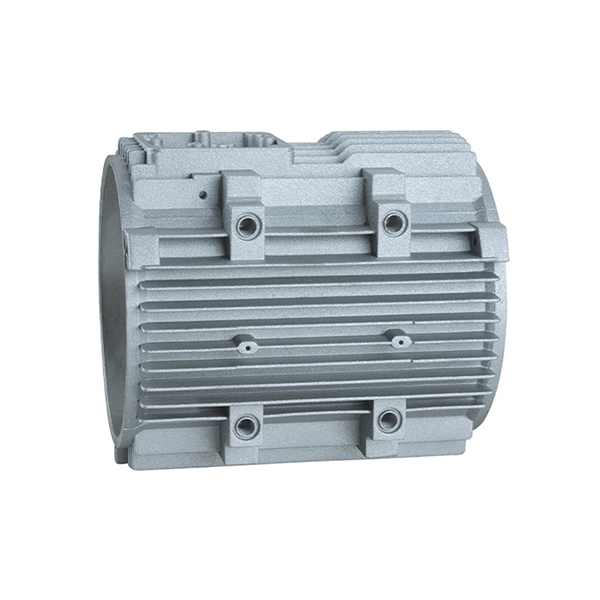Mobile:+86-311-808-126-83
Email:info@ydcastings.com
engine manifolds
Understanding Engine Manifolds Their Importance and Functionality in Internal Combustion Engines
Engine manifolds are essential components of internal combustion engines, playing a critical role in the performance and efficiency of the power unit. In this article, we will delve into the various types of engine manifolds, their functions, and how they contribute to the overall workings of an engine.
What Are Engine Manifolds?
Every internal combustion engine relies on two primary types of manifolds the intake manifold and the exhaust manifold. The intake manifold is responsible for distributing the air-fuel mixture to the engine's cylinders, while the exhaust manifold collects exhaust gases produced during combustion and directs them to the exhaust system.
Intake Manifold
The intake manifold is a complex assembly of passages that connect the carburetor or fuel injectors to the intake ports of each cylinder. Its design is pivotal, as it has to ensure uniform distribution of the air-fuel mixture to each cylinder for optimal combustion. This uniformity is crucial because an uneven mixture can lead to inefficiencies, poor combustion, and overall engine performance issues.
The intake manifold works by reducing turbulence and ensuring a smooth flow of the air-fuel mixture. Vortex generators or other design techniques are often employed to enhance the flow characteristics. Moreover, modern engines use variable geometry intake manifolds that adjust their shape based on engine speed and load, further optimizing performance.
Exhaust Manifold
On the other hand, the exhaust manifold collects gases from the engine cylinders after combustion and guides them into the exhaust system. This component is typically made from cast iron or stainless steel to withstand high temperatures and resist corrosion. The exhaust manifold design is crucial because it affects the engine's back pressure, influencing how efficiently exhaust gases can exit the engine.
engine manifolds

An efficient exhaust manifold minimizes back pressure, improving engine performance by enabling faster exhaust flow. Similar to intake manifolds, exhaust manifolds can also be designed with various lengths and diameters to enhance performance characteristics.
The Importance of Engine Manifolds
1. Performance Optimization Engine manifolds directly impact an engine's performance parameters, such as horsepower and torque. A well-designed intake manifold can increase the engine's volumetric efficiency, allowing more air-fuel mixture into the cylinders. Conversely, an efficient exhaust manifold helps in lowering engine temperature and improving exhaust flow, which is vital for high-performance engines.
2. Fuel Efficiency Proper manifold design aids in optimal combustion, which can enhance fuel efficiency. When the air-fuel mixture reaches the cylinders uniformly, the combustion process becomes more efficient, leading to better gas mileage and reduced emissions.
3. Engine Longevity Effective exhaust flow can prevent back pressure build-up, which can damage engine components over time. Properly functioning intake and exhaust manifolds can thus contribute to the longevity of the engine by reducing wear and tear.
4. Tuning and Modifications Car enthusiasts often modify their engine manifolds to boost performance. Aftermarket intake and exhaust manifolds are available that promise enhanced airflow, improved throttle response, and a more aggressive engine sound. These modifications can significantly alter the power delivery characteristics of an engine, making them popular in performance and racing applications.
Conclusion
In summary, engine manifolds are integral components that significantly influence the characteristics and efficiency of an internal combustion engine. Understanding their roles, from guiding air-fuel mixtures to expelling exhaust gases, offers insight into the complexities of engine design and functionality. As automotive technology continues to advance, the design and materials used in engine manifolds are also evolving, leading to even more efficient and powerful engines. The interest in performance tuning ensures that the relevance of manifold technology will persist as long as combustion engines remain in use.
By appreciating the intricacies of engine manifolds, automotive enthusiasts and engineers can better understand how to optimize performance and enhance the efficiency of these remarkable engines.
-
Understanding Metal Casting TechniquesNewsApr.02,2025
-
Understanding Exhaust Manifolds for Enhanced Engine PerformanceNewsApr.02,2025
-
The World of Metal FabricationNewsApr.02,2025
-
Key Components for Pump and Turbo EfficiencyNewsApr.02,2025
-
Essential Tools for Automotive Maintenance and RepairNewsApr.02,2025
-
Durable Valve Components for Effective Water ManagementNewsApr.02,2025











